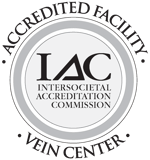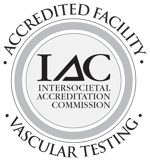Understanding insurance coverage for vein treatments is essential for anyone dealing with symptomatic varicose veins or chronic venous insufficiency (CVI). While some vein procedures are considered medically necessary and are covered by insurance, others may be classified as cosmetic and require out-of-pocket payment.
To help you navigate the complexities, we’ve outlined key considerations that insurance companies typically evaluate when determining coverage for vein treatments.
Symptoms vs. Cosmetic Concerns
Varicose veins are not just a cosmetic issue. Many patients experience symptoms like swelling, pain, heaviness, skin changes, or even ulcers that significantly impact daily activities
Chronic venous insufficiency (CVI), a condition where vein valves fail to function properly, is often the underlying cause. Insurance typically covers treatments for CVI and symptomatic varicose veins but does not cover procedures deemed cosmetic, such as treatments for spider veins.
Spider vein treatments, including sclerotherapy and laser therapy, are usually out of pocket unless they are tied to chronic venous insufficiency, bleeding veins, or ulcers.
What Insurance Looks For
To determine whether your vein treatment is eligible for coverage, insurance companies typically evaluate the following:
- Conservative Measures
- Patients are usually required to try conservative treatments, like wearing compression stockings, for at least three months to see if symptoms improve.
- Exceptions may apply for severe cases involving ulcers or active bleeding.
- Venous Reflux Study
- This specialized ultrasound evaluates blood flow in your veins and identifies abnormal reflux or valve dysfunction.
- Insurance companies use specific vein measurements and diagnostic criteria, such as reflux in the great saphenous vein (GSV) or small saphenous vein (SSV), to confirm the medical necessity of treatment.
- Impact on Activities of Daily Living (ADL)
- Your vein condition must disrupt your ability to perform daily tasks. This documentation helps establish the necessity of the procedure.
- Your vein condition must disrupt your ability to perform daily tasks. This documentation helps establish the necessity of the procedure.
- CEAP Classification
- CEAP is a standardized system that classifies vein disease based on clinical symptoms, etiology, anatomy, and pathophysiology. Insurers require this documentation to assess the severity of your condition.
- CEAP is a standardized system that classifies vein disease based on clinical symptoms, etiology, anatomy, and pathophysiology. Insurers require this documentation to assess the severity of your condition.
- Photo Documentation
- Visual evidence of the affected veins is often required to support an insurance claim.
- Visual evidence of the affected veins is often required to support an insurance claim.
Covered Treatments vs. Non-Covered Procedures

Using HSA and FSA Funds
If your treatment is partially covered but requires meeting a deductible or co-insurance, Health Savings Accounts (HSA) or Flexible Spending Accounts (FSA) can be used to offset those costs. These funds cannot be used for purely cosmetic treatments, such as sclerotherapy for spider veins without a medical indication.
A Simplified Process for You
At the Vein Institute of New Jersey, we are here to guide you through the process of determining coverage for your vein procedure. Our experienced team works directly with your insurance provider to verify coverage and submit all necessary documentation. Once approved, we’ll schedule your treatment promptly.
If you have questions about whether your procedure will be covered, reach out to us for assistance. Ready to get started? Schedule an appointment today and take the first step toward healthier, more comfortable legs.


.jpg)





.jpg?width=944&name=Castle-Connolly-Top-Doctors-Emblem-Large%20(4).jpg)